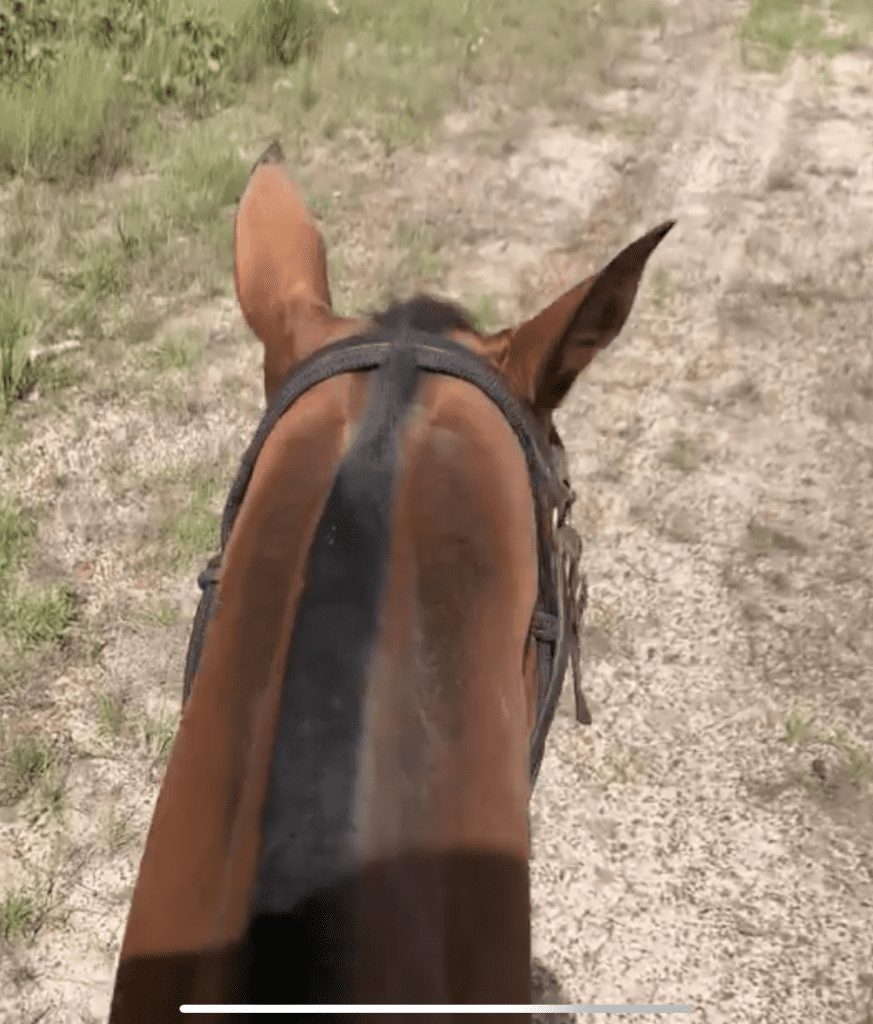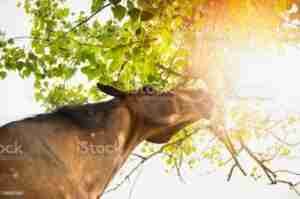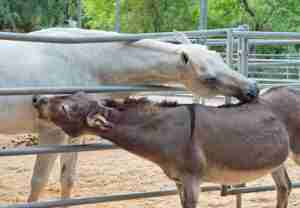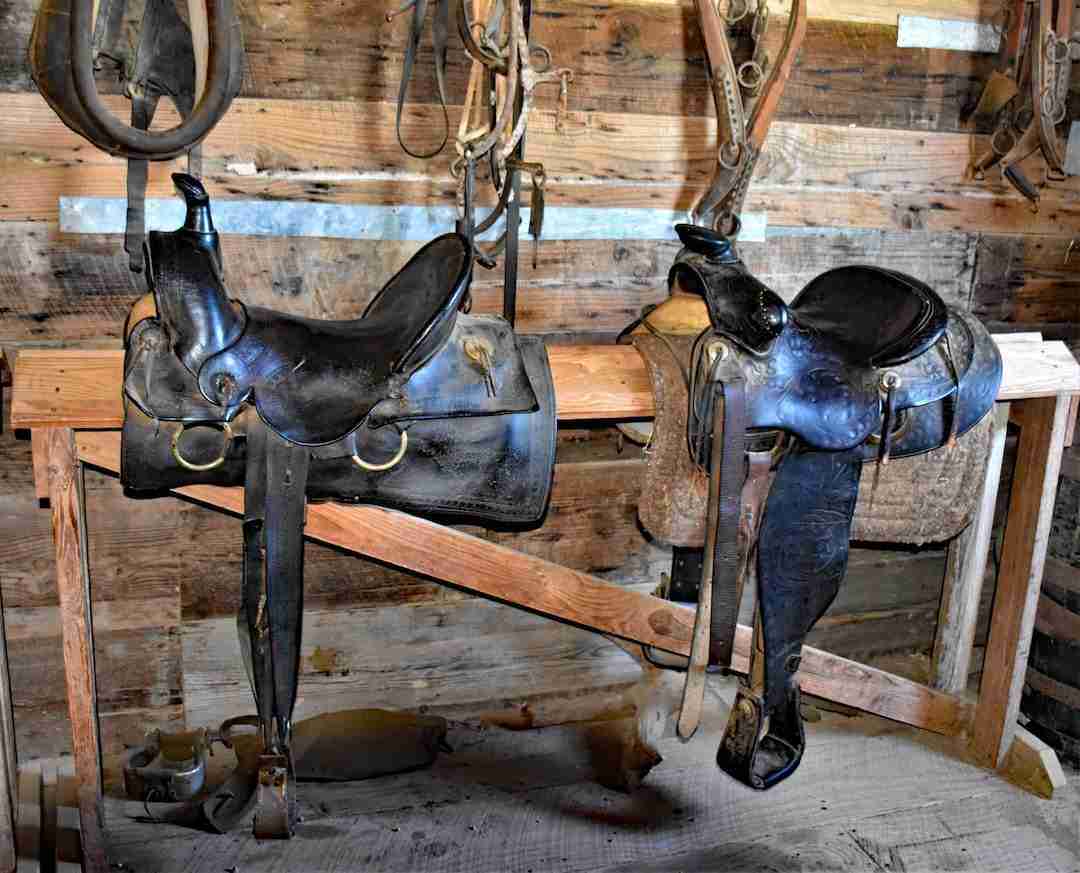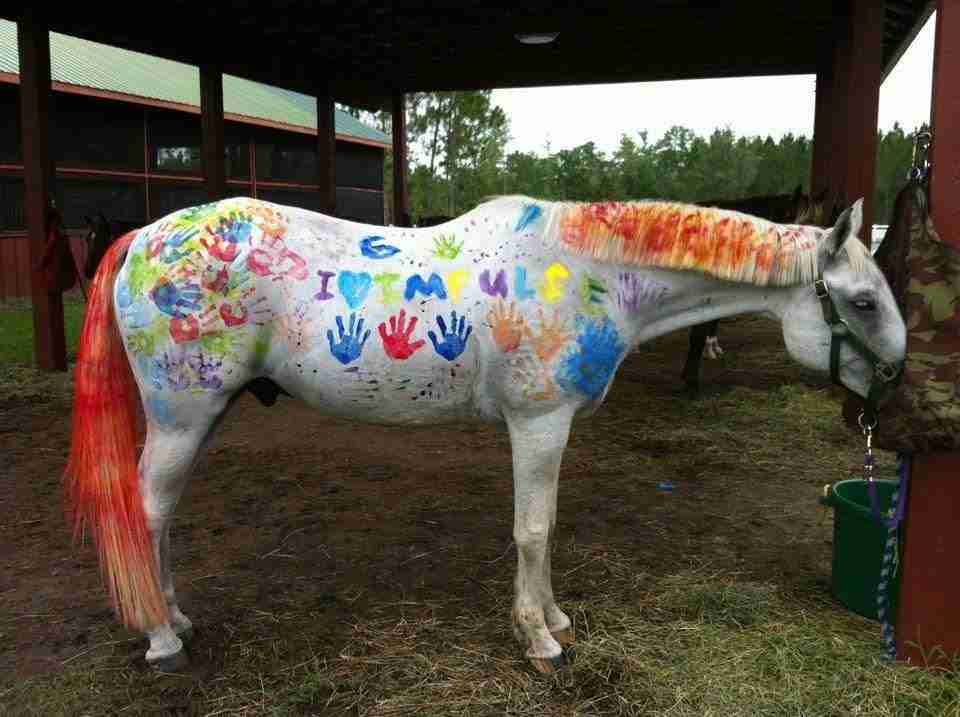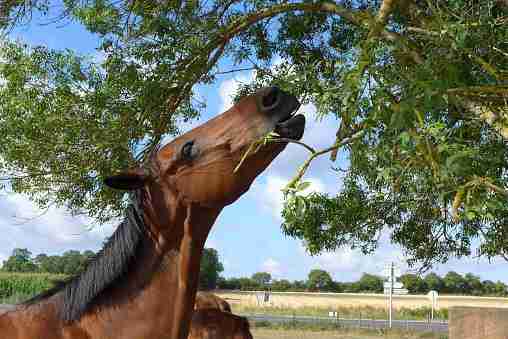Horse owners are often faced with a scenario where they have to consider shaving a horse’s mane, especially in instances where the mane is ragged, knotted beyond repair, shows signs of balding, or when an owner is tired of performing constant mane maintenance. The pros and cons of a roached mane are as follows:
The pros of a roached mane are less maintenance and no mane interference while calf roping or playing polo. A roached mane grows back healthier and can improve a horse’s aesthetics. The cons of a roached mane are less protection against pests and elements and nothing to grab onto when riding.
Certain horse breeds typically presented with a roached mane include the American Saddlebred (3-Gaited) horse, Fjords, Cobs, and the Swiss ‘Freiberger.’ Many owners cut their horse’s mane with scissors instead of shaving it to the skin, preferring a little mohawk. Before you get your shaving or cutting utensils out, ensure the pros outweigh the cons for your horse.
The Pros Of A Roached Mane
When contemplating shaving your horse’s mane for the first time, the idea can fill your heart with dread, and doubt can make you put the clippers away.
A good old roached mane is part and parcel of looking after a horse and can be the right decision when your trusted horse’s mane resembles something out of an animal horror movie. A roached mane will grow back stronger.
1. A Roached Mane Requires Little To No Upkeep
Nothing is as beautiful as a horse with a well-maintained, shiny mane and tail. Horse owners know that achieving a healthy-looking mane requires daily to weekly maintenance.
Mane maintenance involves detangling knots with your fingers (a slow process) and meticulously picking out any dirt and field debris (burrs). Bathing the horse’s mane with hair shampoo and conditioner every week before giving the mane a good brushing takes time and effort.
Braiding your horse’s mane to escape the Bob Marley look or the time-consuming mane-pulling process is a thing of the past when you take the clippers to your horse’s mane. Preparing for dressage or other rider competitions is a breeze, as your horse doesn’t require hunter, button, continental, or running braids.
Regular mane maintenance falls to the wayside, as there’s no mane to groom when roached. Depending on the horse’s genetics and breed, a mane takes several months (close to a year) to grow to a length where regular upkeep is again required.
2. Keeps A Horse’s Mane From Interfering With Reins
If you ever had the fun experience of riding a playing polo on a polo pony (Thoroughbred and Quarter Horse), the first thing you would’ve noticed is the roached manes of the participating ponies.
Manes tend to get in the way of reins, and in a sport that’s all about fast rein action, it can be a major hindrance, hence the bald style. Polo players wear gloves with Velcro strips that are a magnet for wild mane hair.
The tails of polo ponies are tied and taped up to prevent them from getting in the way or interfering with play.
3. Keeps A Horse’s Mane From Getting Entangled In Rope
Ranch work often involves roping (a popular sport), which involves a rider on a horse armed with a rope to catch a cow by way of a lasso. The looped rope used to throw around the cow’s neck is called a lasso and pulls tight when pulled.
The cowboy on the horse will swing the lasso in a circular motion aiming for the cow’s neck area upon release. Many ranchers will roach their roping horse’s mane to ensure there’s no chance of the rope getting entangled while roping.
Typically, a Quarter Horse is preferred as a roping horse as they don’t get spooked by the sound of a swinging rope above their heads, and they display an advanced sense of distance control when chasing a cow.
4. A Roached Mane Grows Back Stronger And Healthier
With over 600 types of biting midges found in America, it’s hardly surprising that these small bloodsucking insects irritate horses, especially during summer in areas close to a water source.
These ‘no-see-ums’ or ‘5-Os’ can cause an allergic response in horses and potentially lead to mane hair loss. A horse constantly itching, scratching, biting, or dramatically rubbing its middle mane hairs by sticking their heads through a fence could benefit from a roach, as treatment of affected areas is much easier with the mane out of the way.
Another horse biting off chunks of a horse’s mane is cause for alarm and stress in both owner and horse. A roach will take care of a raggedly-looking, bald-spotted, and extremely tangled mane, and it will have the following effect on the horse’s mane when it grows back slowly:
- Mane grows back stronger (thicker)
- Mane grows back evenly
- Mane grows back shinier (healthier)
- Mane grows back without any split-ends
- Mane grows back without any sun-damaged hair
5. A Roached Mane Can Improve A Horse’s Aesthetics
A roached mane can do wonders in improving the look of a horse. Removing a scraggy mane full of knots, bald spots, and frizzed, split-end hair will always be an instant improvement.
When a strong-necked horse’s mane is roached, it emphasizes its muscular build by exposing its neck area. A roached mane won’t automatically turn any horse into a beauty, but if done right and with care, the look can enhance the appearance instead of detracting from it.
The Cons Of A Roached Mane
Before you reach for the clippers, there are a few things to consider before shaving your horse’s mane. In the natural scheme of things, a horse with a healthy mane is first prize. Maintaining a horse’s mane to keep it in pristine condition is what all horse owners should aspire to do.
Even when your horse’s mane is damaged, full of tangled knots, balding, and uneven in length due to rubbing or biting, with a little TLC and patience, it can be managed back into a healthy state most of the time. Shaving your horse’s mane because it’s the easy way out will result in the following cons.
1. No Mane To Grab Onto When Riding A Horse
When your horse’s mane is shaved off or cut into a little mohawk, there’s nothing to grab onto when riding. Safety-wise, a roached mane leaves you a little thin, especially when jumping your horse or losing your balance on its back.
A horse’s mane, especially to amateur riders, is a type of security blanket, something to grab onto when riding bareback, or an extra layer of protection should a horse do something funny in the middle of the ride.
When a horse is still in the process of being domesticated, it’s nice to have something to grab onto. Grabbing onto a mane instead of jabbing the horse in the mouth is a far more pleasant experience for the horse.
2. A Roached Mane Offers No Protection Against The Elements
The coats of animals play a vital role in temperature control, like the famous double-coat of a Chesapeake Retriever, which allows the dog to swim in the icy waters of Chesapeake Bay.
The horse’s mane plays a similar role in insulating the horse’s neck area against cold temperatures and keeping the horse dry when exposed to rainy weather. When a horse’s mane is roached, the protective elements offered by a mane are automatically nullified, and extra measures, such as a neck rug, will have to be applied.
When you decide to roach your horse’s mane, try to leave the forelock, as a horse’s forelock offers protection from the sun’s rays.
3. A Roached Mane Offers No Pest Protection
In partnership with its tail, a horse’s mane plays a vital role in pest control and protection from harmful insects. A horse uses its tail and mane to flap away pesky disease-carrying mosquitoes and horse flies.
Without a mane, a horse’s neck becomes exposed to the attacks of these insects, which increases the chance of diseases and viruses being passed onto the horse. When shaving off a horse’s forelocks, the horse loses the ability to keep pesky flies out of its eyes.
Equine Infectious Anemia (spread by horse flies), West Nile virus and Eastern Equine Encephalitis (spread by mosquitos) can be life-threatening to your beloved horse.
Conclusion
The pros of a roached mane are that it grows back stronger and healthier, and the maintenance level required to maintain a mane drops considerably when roached. The cons are that the horse’s mane defense against pests and temperature is nullified, and aesthetically it can detract from the horse’s overall look, especially in weak horses.
Riders who enjoy the safety of grabbing onto something should think twice before shaving their horse’s mane.
Resources
https://www.skidmore.edu/palamountainbenefit/documents/what-is-a-polo-pony.pdf
https://forum.chronofhorse.com/t/roached-mane/759226
https://extension.entm.purdue.edu/publichealth/insects/bitingmidge.html
https://www.petmd.com/horse/why-do-horses-have-manes
https://useventing.com/events-competitions/awards
http://www.rideability.org/wp-content/uploads/2015/04/2-Horse-word-glossary.pdf

